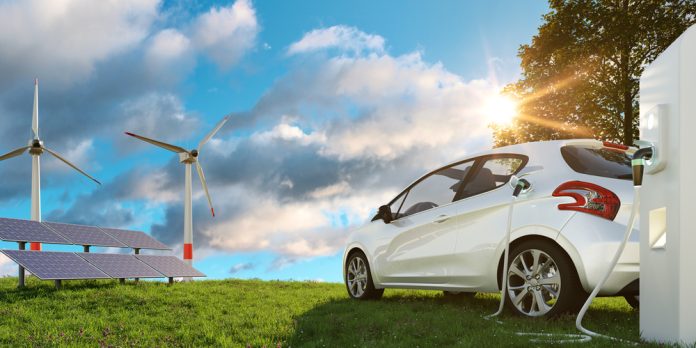
Driving a car is the most common way of getting around, but it’s also one of the most polluting. Driving emissions has a notable health effect on respiratory systems due to toxic substance inhalation from vehicle exhaust. This incident includes microscopic particles that can enter the lungs and cause inflammation and chronic bronchitis. And even lung cancer.
In addition to respiratory problems, exposure to vehicle exhaust has been linked to cardiovascular disease and diabetes. Aside from that, exhaust emissions also contribute to climate change by emitting carbon dioxide into the atmosphere.
Fortunately, this article includes five practical ways to minimize driving emissions.
- Regularly Changing Oil
For your engine to run smoothly and efficiently, it needs regular oil changes. This practice is a simple maintenance step, but it’s powerful because it can help improve fuel economy.
Before changing your vehicle’s oil, you must clean auto components from DPF parts like the valve cover, the spark plug, the air filter housing, and the underside of the engine. After that, you may also try switching from conventional oil to synthetic oil. The latter are less prone to sludging than the previous one because they lack friction-inducing substances called naphthene.
- Buying Quality Gasoline
Gasoline is made from a mix of different hydrocarbons, and the quality of these hydrocarbons can vary widely. The higher-quality gasoline generally has lower amounts of sulfur, which makes it cleaner burning and results in fewer emissions coming out of your tailpipe.
If you’re on a budget, look for stations where you can get E10 or E85 (ten percent ethanol or eighty-five percent gasoline). These fuels burn cleaner than regular gasoline, resulting in fewer emissions. Plus, they tend to cost less per gallon than regular gas, so they can also save you money.
- Changing Your Driving Habits
Driving habits are a significant contributor to your vehicle’s emissions. So, the following tips will help you reduce the amount of pollution your vehicle produces daily:
- Watching Your Speed: The faster you drive, the more pollution you create. The best way to reduce your emissions is to slow down, especially if there’s no traffic ahead of you. Driving at or below the speed limit will save fuel and help reduce emissions. Also, consider using cruise control when possible, so you don’t have to accelerate and decelerate repeatedly.
- Promoting Carpooling: Carpooling is one of the easiest ways to cut back on driving time and miles traveled, and it’s good for the environment too. If you share rides with friends or family members, it costs less per person than individual trips, which means fewer greenhouse gas emissions per mile traveled. This practice also helps reduce traffic congestion because fewer cars are on the road at any time.
- Avoiding Idling: Idling wastes gas and increases your emissions. Instead, turn off your car when you park or pull over if you’re waiting for someone. Doing so is good for the environment, and it’s a better practice for your vehicle because it reduces wear on parts like spark plugs if you keep them from overheating while sitting still for an extended period.
- Driving Less Aggressively: Aggressive driving may not be a habit for many drivers, but it only takes one time to use the accelerator instead of the brakes to start hurting the environment. To avoid this, try to drive at a steady pace and not accelerate or brake too quickly. You’ll also want to avoid sudden lane changes and aggressive braking.
- Driving Fewer Miles Annually: Most drivers aren’t considerate regarding the number of miles they drive, which significantly affects air pollution. Thus, you must cut your mileage by even a couple of thousand miles to reduce your carbon footprint over time. For instance, you may consider taking public transportation more often if you drive alone frequently. If this alternative isn’t an option, consider switching to an electric car that uses fewer miles per gallon.
- Avoiding Left Turns: Turning left uses more gas than turning right because it requires starting up your engine, shifting gears, accelerating, and decelerating again, all while going slower than when you’re moving straight ahead. If you can avoid turning left whenever possible, it will significantly impact fuel efficiency and emissions reduction.
- Combining Errands And Travel In One Trip: For example, instead of making separate trips to run errands during the week, try mixing them into one more extended trip on weekends when traffic is lighter. This option benefits large vehicles such as sport utility vehicles (SUVs) or vans because they tend to get better gas mileage when traveling long distances at slower speeds than cars. Also, consider parking farther away from stores or offices, so you don’t have to drive so far if you need to go back out again later that day or evening.
- Frequently Changing Air Filter
The air filter cleans the air that enters your engine by removing dust and dirt. As dust and dirt enter your engine, they can cause damage to vital parts such as pistons, valves, and spark plugs. A clogged air filter can also restrict airflow, leading to poor performance and reduced fuel economy.
So, you have to change your filter for proper car maintenance. However, you must know that the frequency of this activity depends on driving conditions and how much time you spend in stop-and-go traffic or at idle speeds. If you go primarily on highways or long stretches at high rates with little stop-and-go traffic, you may only have to replace your filter once a year. However, if you drive in stop-and-go traffic where you’re constantly accelerating from stops or idling at red lights and stop signs, it may be necessary to change it every three months or so.
- Checking Tire Pressure
If your tires aren’t at the correct pressure, they can wear out faster and affect your fuel economy. Also, underinflated tires can make your vehicle harder to steer, which increases braking distance and reduces traction.
You must check tire pressure monthly when tires are cold before driving a mile or two. You may check your vehicle’s driver’s side door frame to see this information to ensure that your tire meets standards. Also, if you’re switching to an environmentally friendly car and using a gauge, make sure it’s accurate and conforms with auto industry standards.
Key Takeaway
As a driver and a vehicle owner, your responsibility is to reduce your driving emissions without compromising your comfort. Therefore, you must consider following these five tips to help you do so. As a result, you might be able to minimize your carbon footprint while ensuring car maintenance to avoid costly repairs in the long run.





